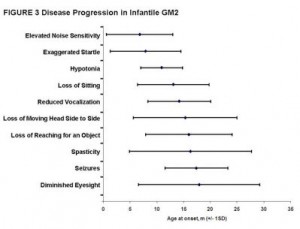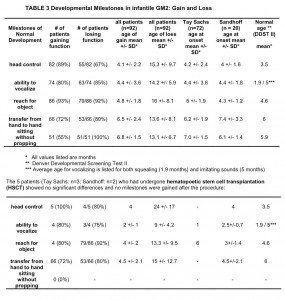Tay Sachs
Tay Sachs Disease is categorized as a GM2 gangliosidoses neuropathy. GM2 gangliosidoses are autosomal recessive inherited conditions of the nervous system with a heterogeneous clinical spectrum. Infants are the most severely affected but the pace and characteristics of neurological decline and factors affecting survival have not been systematically described. GM2 gangliosidoses are caused by inherited deficiency of lysosomal enzyme, β- hexosaminidase, and result in ganglioside accumulation in brain. Onset during infancy leads to rapid neurodegeneration and death before four years of age.
Recently, correction of gene and enzyme responsible for this disease has been achieved in animal models of GM2 gangliosidoses with gene delivery of the lysosomal enzymes using adeno-associated viral vectors. The observed benefits are encouraging and support the development of human clinical trials.
Our current work is focused on quantifing functional status and its variability over time and establishing a scoring system that could be applied to future clinical trials. The studies are facilitated by access to patients through the advocacy organization, National Tay Sachs and Allied Diseases Association (NTSAD).
See the NTSAD website for more information on Tay Sachs and other gangliosidoses.


